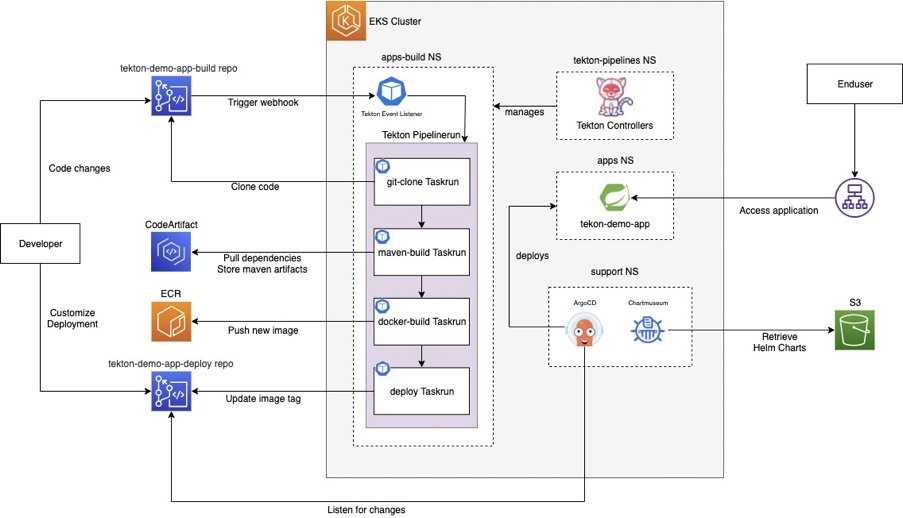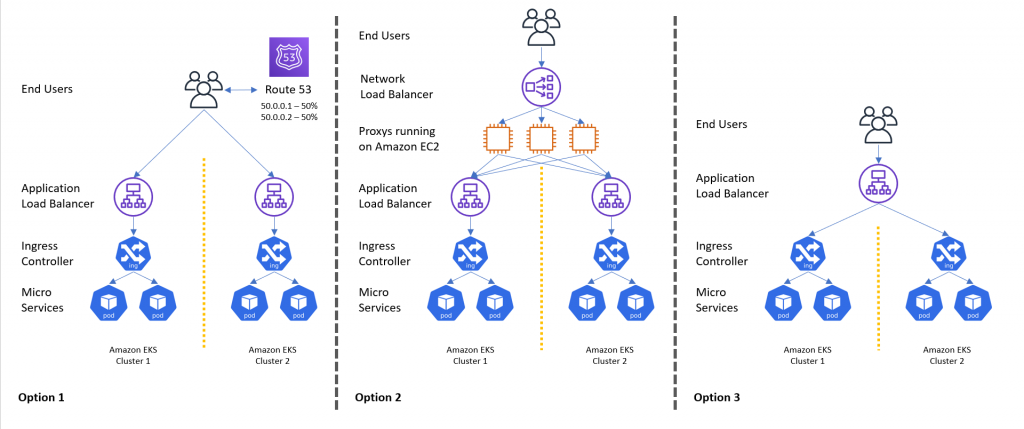Containers
Category: Learning Levels
EKS Persistent Volumes for Instance Store
The Kubernetes project is made up of a number of special interest groups (SIGs) that focus on a particular part of the Kubernetes ecosystem. The Storage SIG is focused on different types of storage (block and file) and ensuring that storage is available to containers when they are scheduled. One of the subprojects of the Storage […]
Continuous Delivery of Amazon EKS Clusters Using AWS CDK and CDK Pipelines
Customers are looking for ways to automate the deployment of their Amazon EKS clusters across different versions, environments, accounts, and Regions. The deployment of these clusters involves tasks like creating your clusters with desired networking and logging configuration, selecting Amazon EKS add-ons versions, and, once it is ready, deploying other infrastructure components. This post shows […]
Cloud Native CI/CD with Tekton and ArgoCD on AWS
Introduction With the ongoing popularity and adoption of container orchestrators such as Kubernetes, more and more cloud-native applications are built on top of it. Besides business applications, companies are migrating their infrastructure-related components such as CI/CD systems as well. But are those systems ready for such modern platforms? The answer depends. Clearly, most of the […]
Controlling and monitoring AWS App Runner applications with Amazon EventBridge
Many applications do not need to be available 24/7, such as those in development and QA environments. AWS App Runner supports this and allows applications to be paused, or deactivated, to lower costs when not in use. The applications can then be resumed or activated when they are needed. This blog post uses this example […]
Amazon ECS on AWS Outposts
AWS Outposts is a fully managed service that offers the same AWS infrastructure, AWS services, APIs, and tools to virtually any data center, co-location space, or on-premises facility, in the form of a physical rack connected to the AWS global network. AWS compute, storage, database, and other services run locally on Outposts, and you can […]
GitOps model for provisioning and bootstrapping Amazon EKS clusters using Crossplane and Flux
In an earlier blog (Part 1 of the series), I discussed the adoption of the GitOps model as an efficient strategy for provisioning cloud provider-specific managed resources, such as, for example, Amazon S3 bucket and Amazon RDS instance, that application workloads depend on. The blog presented the details of implementing a use case where an Amazon […]
Connecting Google Kubernetes Engine (GKE) Clusters to Amazon EKS
Customers running Google Kubernetes Engine (GKE) clusters can now use the Amazon Elastic Kubernetes Service (Amazon EKS) to visualize GKE cluster resources. This post describes how to use Amazon EKS Connector to connect a GKE cluster to the Amazon EKS console. The EKS console provides a single pane of glass to visualize all your Kubernetes […]
Onfido’s Journey to a Multi-Cluster Amazon EKS Architecture
This blog was coauthored by Eugene Malihins, Senior DevOps Engineer at Onfido, and Olly Pomeroy, Containers Specialist SA at Amazon Web Services Who is Onfido? Onfido is setting the new standard for digital access. The company digitally proves a user’s real identity using artificial intelligence (AI) by verifying a photo ID and comparing it to […]
Getting started with Consul service mesh on Amazon ECS
We recently announced the general availability of Amazon Elastic Container Service (Amazon ECS) service extension for Consul service mesh in AWS Cloud Development Kit (AWS CDK). This is a new integration that makes it easier for customers to use Consul as a service mesh on Amazon ECS. In this blog post, we show you how […]
Progressive Delivery using AWS App Mesh and Flagger
In this blog, we will cover how to implement progressive delivery using AWS App Mesh and Flagger. Progressive delivery helps customers release features quickly, decrease deployment risk, and increase deployment safety. Customers already using CI/CD pipelines and following Agile and DevOps practices will greatly benefit by implementing progressive delivery. Customers currently use various tools like Jenkins, […]









